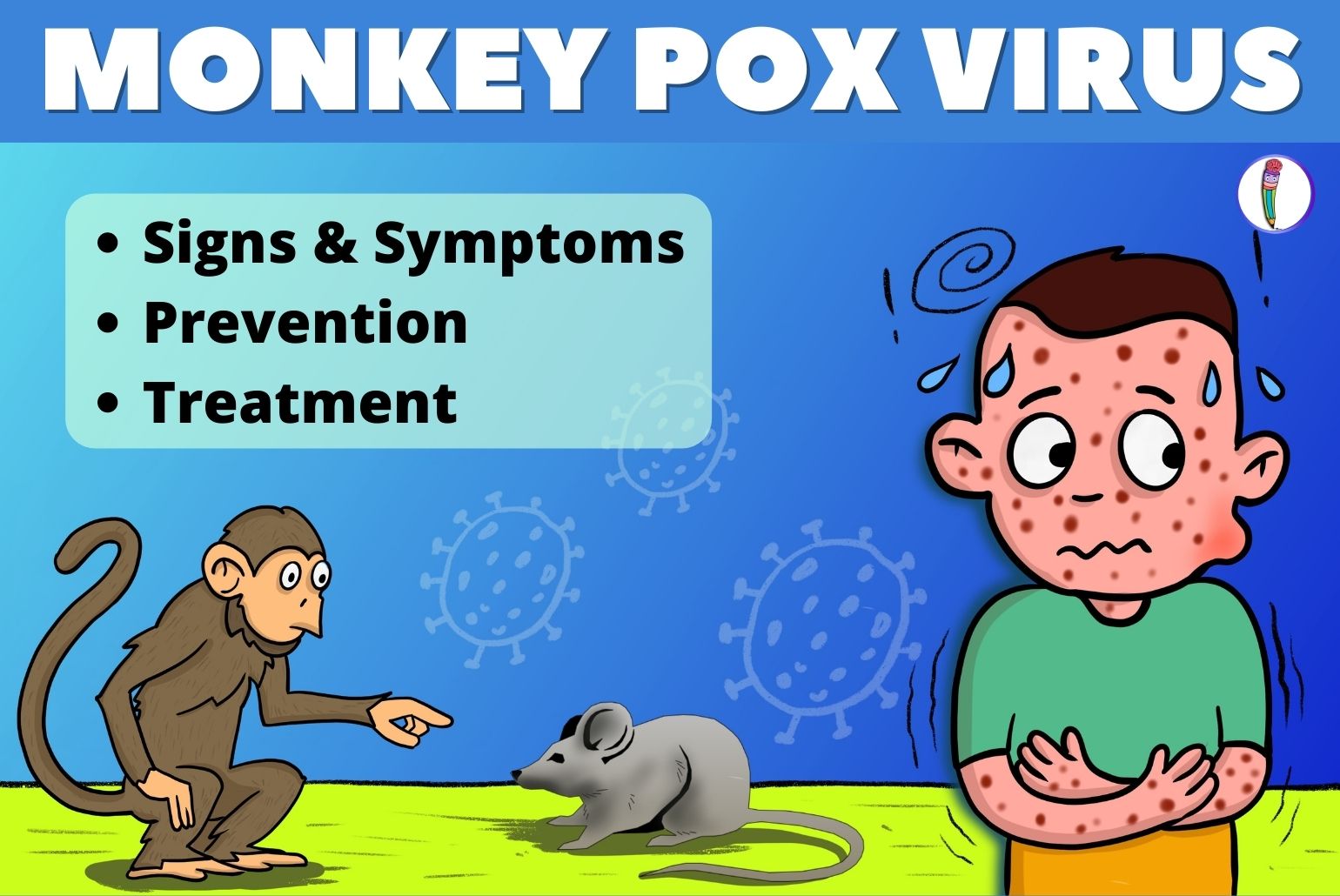Table of Contents
What is Monkeypox virus?
Monkeypox is a zoonotic viral disease. It is a rare disease that is caused by infection with monkeypox virus(MPXV). It belongs to the Orthopoxvirus genus. This genus also includes variola virus which cause smallpox.
It can infect non-human primates, rodents and some other mammals.
Most of these cases primarily occur in tropical rainforest areas of Central and Western Africa. Recently in 2022 a few Monkeypox cases were reported in the United States, Canada, France, & Australia.
Monkeypox doesn’t occur naturally in this part; however, cases have happened that were associated with international travel or importing animals from areas where the disease is more common.
Why is it called monkeypox virus?
That’s because the virus was first discovered in monkeys (hence the name) in 1958, and in humans in 1970
Is Monkeypox contagious?
Yes! It may spread from handling bushmeat, an animal bite or scratch. It can be transmitted through direct contact with infected person’s body fluids or lesion material.
What are monkeypox symptoms?
In humans, the symptoms of monkeypox are similar to but milder than the symptoms of smallpox. The illness begins with:
The main difference between symptoms of smallpox and monkeypox is that monkeypox causes lymph nodes to swell (Lymphadenopathy), which is called lymphadenopathy. In comparison smallpox does not cause lymphadenopathy.
- Fever
- Headache
- Muscle aches (myalgia)
- Back pain
- Swollen lymph nodes
- Chills
- Exhaustion
The incubation period is usually 7−14 days but can range from 5−21 days.
Within 1 to 3 days after the appearance of fever, the patient develops a rash, often beginning on the face and later spreading to other parts of the body.
Lesions progress through the following stages before falling off:
Macules – These are the lesions with a flat base
Papules – Lesions are slightly raised firm
Vesicles – Here lesions are filled with clear fluid
Pustules- In this the lesions are filled with yellowish fluid
Crusts which eventually dries up and fall-off
The illness typically lasts for 2−4 weeks. In Africa, monkeypox has been shown to cause death in as many as 1 in 10 persons who contract the disease.
Complications of this disease includes:
- Secondary infections
- Bronchopneumonia
- Sepsis
- Encephalitis
- Infection of the cornea with ensuing loss of vision.
The extent to which asymptomatic infection may occur is unknown.
The case fatality ratio of monkeypox has historically ranged from 0 to 11 % in the general population and has been higher among young children. In recent times, the case fatality ratio has been around 3-6%.
How is it diagnosed?
Detection of viral DNA by Polymerase chain reaction (PCR) is the preferred laboratory test for monkeypox. Test results should be interpreted together with clinical features.
Also, there can be a false positive result from the recent or remote vaccination with a vaccinia-based vaccine (e.g. anyone vaccinated before smallpox eradication, or more recently vaccinated due to higher risk such as orthopoxvirus laboratory personnel.
Is it possible to prevent monkeypox?
Yes! There are number of measures that can be taken:
– Avoiding eating or touching animals known to acquire the virus in the wild (mainly African rodents and monkeys)
– Avoid contact with animals that are sick or that have been found dead in areas where monkeypox occurs.
– Avoid contact with any materials, such as bedding, that has been in contact with a sick animal.
- Isolate infected patients from others who could be at risk for infection.
- Practice good hand hygiene after contact with infected animals or humans.
For example, washing your hands with soap and water or using an alcohol-based hand sanitizer.
Use personal protective equipment (PPE) when caring for patients.
Treatment of Monkeypox:
Currently, there is no proven, safe treatment for monkeypox virus infection.
So In order to control and prevent monkeypox outbreak,
smallpox vaccine, antivirals like (Cidofovir or brincidofovir), and vaccinia immune globulin (VIG) can be used.
Recently in 2022, European Medical Association (EMA) has licensed an antiviral agent known as tecovirimat for smallpox. It is not yet widely available. If used for patient care, tecovirimat should ideally be monitored in a clinical research context with prospective data collection.
A Visual Learning Platform





